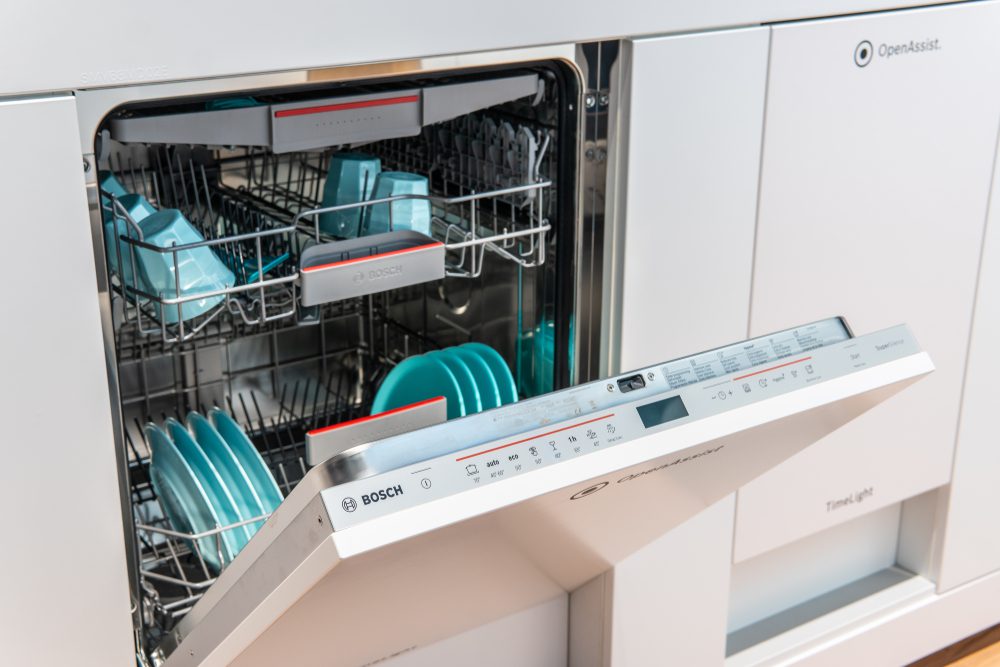Are you looking for a low-maintenance plant that is easy to take care of? If so, Peperomia Rosso may be the perfect choice.
This guide will teach you how to care for and propagate this plant, making it a great option for anyone.
Is Peperomia Rosso Easy to Care for?
The Peperomia Rosso is easy to care for. You can grow the plant both indoors and outdoors. It does not need much attention, and it has no particular needs that make it difficult to care for. It’s best to keep it in a bright area with indirect sunlight and to regularly water it.

How to Care for Peperomia Rosso?
The plant needs plenty of water and some sunlight. It can be planted in a container, or outside with the help of a trellis to keep it from falling over. The plant also needs a balanced, well-drained soil.
Light Requirements
Peperomia Rosso is a plant that does best in bright, indirect light but can tolerate low light conditions.
The ideal light for this plant is early morning or late afternoon sunlight.
Peperomia Rosso can also grow healthy foliage under fluorescent light conditions.
Peperomia Rosso needs bright, indirect light to look its best and grow healthy foliage. The plant can tolerate low light but should avoid full sun exposure. The ideal light for the Peperomia Rosso is bright, indirect sunlight. The Peperomia Rosso can tolerate direct, mild sunlight exposure for a couple of hours. The plant produces amazing foliage in fluorescent light as well. To maintain the plant’s vibrancy, position it at least a meter away from windows and expose it to early morning or late afternoon sunlight hours.
Temperature Requirements
Rosso Peperomia plants prefer moderate temperatures between 60-80 degrees Fahrenheit (16-27 degrees Celsius).
They are winter hardy in USDA hardiness zones 11 through 12, so they can withstand some colder temperatures.
However, it is important to keep Red Peperomia plants away from heating vents and doors that open and close frequently, as this can cause temperature fluctuations that may stress the plant.
Humidity Requirements
Peperomia Rosso is a plant that thrives in humid environments. If the humidity level in your home is not high enough, you can mist your plants to raise the level of humidity.
The optimum humidity for Peperomia Rosso is 75%. To improve air moisture levels, you can place Peperomia Rosso near other houseplants or use a pebble tray.
Water Requirements
How to Water Peperomia Rosso?
To water, put your plant on a saucer that has drainage holes in it, fill it with just enough water to cover the saucer, and let your plant soak up that water overnight. In the morning, drain out excess water.
Top-watering should be done by carefully dripping or using a spray bottle of water.
Peperomia Rosso needs to be watered when the soil is 50–75% dry and watered less in the wintertime. Avoid watering the rosette crown of the plant, which is prone to black mold rot.
Always water the plant from below and allow the plant to soak up all the water it needs.
Red Peperomia prefer standard household humidity levels. When misting your peperomia, avoid spraying directly onto the leaves.
Peperomia care doesn’t involve regular misting with water, but you can spray them if you need to clean the leaves or increase air humidity levels.
When to Water the Peperomia Rosso?
The Peperomia Rosso should be watered when the soil is dry to about 1/4 inch below the surface. The plant needs to be watered when the soil is 50–75% dry.
In hot, dry weather, water the plant with pebbles to create high humidity.
Reduce water significantly in winter for indoor plants. Don’t water during the autumn and colder months.
Watering of Peperomia Rosso is done in the morning and evening.
How Often to Water Peperomia Rosso and Tips to Ensure Proper Drainage?
Water your plant every 7 to 10 days, and allow excess water to pour out of the drainage holes.
Always water the plant from below and allow the plant to soak up all the water it needs.
Water your plant every year, in late springtime, with fresh water. It is important to note that the crown of a plant can be wet. Especially during cold weather, it is no longer safe for you or your plants to have the crown wet because this may cause mold and other problems.
Do not water during the autumn and colder months as it can cause leaf burn.
Fertilizer Requirements
Peperomia Rosso needs nitrogen, phosphorus, and potassium-based fertilizers to grow. Peperomia Rosso needs fertilizer during its active growing season only, from spring to fall.
You can use granules of fertilizer or a liquid fertilizer every two weeks to feed your plant.
Fertilize your plant twice a month during the growing season, and use plant food every 3 watering sessions.
Fertilize only once a month in the fall and winter.
Dilute fertilizer before using it, and take care to avoid contact with leaves.
Wait 6 months after repotting or purchasing a plant before fertilizing it.
Fertilize in the first spring after 6 months have passed.
Soil & Transplanting
Peperomia Rosso plants need nutrient-rich, well-draining soil. Overwatering can damage the Peperomia Rosso’s delicate root mesh.
A balanced mixture of materials can be used to create a soil that is well-draining and suitable for the Peperomia Rosso.
Peperomia Rosso is a good plant for a dish garden because of its tiny root system and fine roots.
Peperomia Rosso likes well-drained soil that retains moisture, so make potting soil by combining 50% perlite and 50% peat moss.
Peperomia Rosso should not be repotted until it outgrows its current pot.
If the roots grow through the drain holes, Emerald Ripple needs to move up a pot size. Take care when repotting, as this plant is fragile and delicate.
Potting, Repotting and Pruning
Peperomia Rosso roots like being root-bound, so if you see roots poking through the drainage holes, it’s time to repot. Peperomia Rosso needs to be repotted every other year or when it looks like it is getting too big for its current pot.
When Peperomia Rosso seems to have grown too big for its pot, it is important to repot it. Choose a potting container at least twice the size of the original pot. To pot or repot a Peperomia Rosso, use a fresh potting soil made up of 50% perlite and 50% peat moss. Handle the roots carefully while potting or repotting, as they are fragile.
Pruning helps to keep the plant healthy and also reduces its vulnerability to pests. Pruning spares spent leaves, which can prolong the life of the plant. Always use a sharp knife when cutting Peperomia caperata Rosso. Prune once or twice a year.
Grooming, Pruning & Maintenance of Red Peperomia
Red Peperomia is a beautiful plant that doesn’t require a lot of maintenance. Dusting and misting is more important than pruning in maintaining the appearance of the Rosso peperomia.
Pruning should only be done if necessary to maintain the size and shape of the plant, and should be done in early spring. Trimming should only be done if it is needed to keep the plant from growing too large, and it should be done in early spring.
To groom your Peperomia Rosso, simply dust the plant off with a mist spray bottle and a soft cloth during the first few weeks of spring.
You can also trim it evenly to maintain its shape and pattern.
By following these simple tips, you can keep your Peperomia Rosso looking beautiful all year round!
Keeping Peperomia Caperata Rosso from Diseases
Peperomia Rosso plants are generally resistant to pests and diseases, but there are a few things you can do to help prevent problems.
If you do notice signs of pests or diseases, use homemade insecticides, insecticidal soap, or Neem oil solution to get rid of them.
Overwatering is the biggest killer of these plants, so be sure to water only when the soil is dry. You can also increase the humidity around the plant to help keep pests away.
How to Propagate the Peperomia Rosso?
Peperomia Rosso is an easy plant to propagate and will grow quickly. It can be propagated by root cutting, leaf cuttings, or stem cuttings and thrives in a sunny location with well-drained soil. It produces beautiful flowers that lighten up your space.
To propagate Peperomia Rosso, you will need to:
– Cut stem cuttings from the mother plant and leave the edge of the stem to dry out.
– Use a sharp, sterilized knife to make the stem cuttings.
– Dip the edge of your cutting into a sizeable rooting hormone portion.
– When using organic compost in your potting soil mix, it helps to have a firm base. As such, you should add the compost on top of the soil before planting your cutting so that it can grow robustly from its new home.
– Gently moisten the topsoil and place the growing medium under indirect, bright light.
Do not use fertilizer on the baby Rosso until it’s about 6 months old.
Step 1: Choose your method
To propagate a Peperomia Rosso, you can use stem and leaf cuttings or seeds. For stem and leaf cuttings, remove some of the leaves from the bottom of the stem and stick them into moist soil. You will need a pot with some growth hormone for this method. Place the plant in a warm location with indirect sunlight. Growth will typically occur within a month.
To propagate Peperomia Rosso with seeds, sow them in fresh soil in a sunny location. The plants need indirect sunlight and warmth to grow properly.
Step 2: Prepare your materials
To propagate Peperomia Rosso, you will need a glass jar, fresh potting mix, and a sharp knife. You will then plant the cutting in the soil and pack it lightly so it stands upright. You will place the cutting somewhere warm with bright indirect sunlight.
Step 3: Propagate your plant
Peperomia Rosso plants can be propagated from either seeds or stem and leaf cuttings. For stem and leaf cuttings, it is important to use a clean blade and keep the cuttings in a pot with moist, airy soil. The cuttings should then be placed in an area with indirect sunlight and lightly watered at least once a week.
Avoid direct sunlight for the first six months. Feed your plant with plant food every few weeks throughout the growing period.
Step 4: Care for your propagated plant
To propagate Peperomia Rosso, water the stem first, then move it into a pot. Root growth is faster when moving Peperomia Rosso into a potting soil than when skipping the water step.
Choose a stem that has 2 or more leaves and cut it off using a sterile knife or large scissors. To prepare for planting, dip the stem end of the Peperomia Rosso into water and wait for roots to grow before moving it into potting soil.
Add fresh potting mix and water to the soil. Plant stem cutting into soil and pack lightly. Place it in bright, indirect sunlight.
Be sure to water the plants regularly and provide them with indirect light and humidity. The Peperomia Rosso plantlets will grow rapidly in the first 8 weeks.
Step 5: Re-pot your propagated plant
To re-pot your newly propagated Peperomia Rosso plant, you will first need to dip the stem end into water and wait for the roots to start growing.
Once the roots have grown, you can then move the plant to a potting soil and pack it lightly. Place the plant somewhere warm with bright, indirect sunlight.
1. To re-pot your newly propagated Peperomia Rosso plant, first cut a stem from a healthy plant.
2. Then, plant the stem in a pot with a moist growing mixture or compost.
3. You can also take cuttings from leaves with attached stems and dip them in mild growth hormone before planting them in fresh compost mixed with growth hormone.
4. To keep the new plants warm and moist, place them in a warm place with bright indirect light.
How to Propagate Peperomia Rosso from Stem Cuttings
To propagate Peperomia Rosso, you will need a stem cutting that has at least 2 leaves. You can either plant the stem cutting directly in soil or water it first before transferring it to a pot.
If you decide to grow it in water first, dip the stem end into the water. Propagate Peperomia Rosso by cutting off a stem, then planting it in soil. Wait for the roots to grow before moving the plant to potting soil.
If you decide to water the plant directly from the stem, make sure there is drainage holes in the pot. Place the plant in bright, indirect sunlight and water as needed.
How to Propagate Peperomia Rosso from Leaf Cuttings
Leaf cuttings are a similar method to stem cuttings, but you’ll use leaves instead of the entire stem. To propagate a Peperomia Rosso, cut off a leaf with the stem attached and dip it into rooting hormone.
Treat as you would a stem cutting, putting it into fresh compost with a little rooting hormone mixed in.
In a few weeks to a month, you will see growth and new roots will sprout.
To propagate Peperomia Rosso from leaf cuttings, follow these steps:
1. Remove a piece of the leaf while keeping the stem connected.
2. Make a slanting cut in the stem, and then immerse the cut end into some rooting hormone.
3. Place it in some clean, new compost that has a small amount of rooting hormone already mixed in.
4. Handle similarly to how you would a stem cutting.
How To Plant a Peperomia Rosso?
It is simple to plant in the ground, but it will take time to grow. It will thrive in any soil type, but it prefers to be moist or wet during the growing season. You should give it enough space and provide adequate light as well.
When to Plant the Peperomia Rosso?
When to plant Peperomia Rosso is a question that people frequently ask. It depends on your location. In areas where temperatures are between 40-60 degrees Fahrenheit and the plant receives 6-8 hours of direct sunlight during the day, it is best to plant your Peperomia Rosso in late fall.
You can also try planting it during spring, but the best time to plant a Peperomia Rosso is in the middle of spring.
Where to Plant the Peperomia Rosso?
The best place to plant the Peperomia Rosso is in a pot that has good drainage. Ensure there’s lots of air circulation around it and make sure the soil isn’t too wet.
Peperomia Rosso plants are small, so they don’t need a lot of space. You can plant them close together in pots, and they will still do well. Pruning is needed to maintain the plant’s form, but stakes are not required.
Light
The Peperomia Rosso needs balanced sunlight to grow properly. Too much or too little sunlight can cause the leaves to burn or the colors to fade. The best place for the Peperomia Rosso is a spot where it will get light early in the morning or late in the afternoon.
Soil
Peperomia Rosso is a plant that doesn’t like sitting in water, so the soil should be well-drained. The best soil for Peperomia Rosso is a 1:1 ratio of soil and peat moss, or perlite for added stability.
How to Pot and Repotting the Peperomia Rosso?
Pot and Repotting
Peperomia Rosso plants are best suited for dish gardens and should only be repotted when necessary. To pot a Peperomia Rosso, use a fresh potting soil made up of 50% perlite and 50% peat moss.
Repot when the plant outgrows its current pot or when you see the roots coming out of the drainage holes. Be extra careful not to put too much stress on the plant’s root structure when repotting.
The Peperomia Rosso can be repotted every year, but it’s not necessary. To repot the plant, check the soil and see if it has become loose or if the roots have grown overgrown. The Peperomia Rosso prefers to be root bound and grown in smaller pots than usual, so you’ll know it’s time to repot when you start to see roots coming out of the drainage hole.
Signs That Indicate It Is Time to Repot Peperomia Rosso
Some signs that indicate it’s time to repot include loose soil or roots starting to crawl out of the drainage hole.
When you do repot, make sure to use fresh soil and level the new pot well so the plant’s roots are in a stable position.
Make sure to properly water and care for your plant after repotting.
When to Repot Peperomia Rosso?
Peperomia Rosso prefers to be in shallower soil, so it won’t need to be repotted as often as plants that need deep pots.
You’ll know it’s time to repot when the plant has outgrown its current pot or when the roots start to come out of the drainage hole.
Change the soil every 2-3 years and only repot into a pot one to two inches larger than the previous one.
What are the Benefits of Peperomia Rosso?
Peperomia Rosso has a ton of benefits including being an antioxidant, anti-inflammatory and antibacterial. It can be used to control air quality in the home, especially during winter months. It also produces a lot of oxygen and helps circulate the air that people breathe in their homes.
Peperomia Rosso is one of many, but the most popular houseplant to use in a home setting due to its low cost and high aesthetic value.
1. The Plant Is Easy to Take Care of and Is a Great Option for Those Who Are New to Plant Care.
The plant is easy to take care of and is a great option for those who are new to plant care. It requires indirect sunlight, water when dry, and a small pot. Rosso Peperomia is a low-maintenance plant that does well in public spaces with consistent temperatures and lighting. It makes a great desktop plant, or general office or public space plant because it grows well in a small pot. If your bathroom gets good natural light, peperomias make great bathroom plants.
- Rosso Peperomia is easy to take care of: Requires indirect sunlight, water when dry, and small pot.
- Rosso Peperomia is a low maintenance plant: Does well in public spaces with consistent temperature and lighting.
- Rosso Peperomia makes a great desktop plant or general office or public space plant: Grows well in a small pot size making it an excellent desk topplant or general office/public space choice..
- Rosso peperomias make great bathroom plants if your bathroom gets good natural light: Dark green color blends well in shady areas with good drainage..
2. Peperomia Rosso Is Known To Be a Low-Maintenance Plant That Does Not Require a Lot of Care.
Peperomia Rosso is known to be a low-maintenance plant that does not require a lot of care. It is easy to grow and maintain, requiring only moderate amounts of light and well-drained soil.
Peperomia Rosso plants prefer warm, humid conditions and grow slowly. You will need to adjust the pot size to account for the slow growth of this plant.
Peperomia Rosso prefers bright, indirect light for 4 hours a day. Peperomia Rosso needs well-drained soil and a high sand to loam ratio for optimal growth.
Root rot can be a problem, so it is important to monitor the soil and water levels.
3. The Plant Is Known To Be Drought-Tolerant, Making It a Great Choice for Those Who Live in Areas with Little Rainfall.
Peperomia Rosso is a plant that is known to be drought-tolerant. This means that it can survive in harsh summer and drought conditions as well.
Peperomia Rosso is a succulent plant, which helps it store water in its leaves and stem. This makes it a popular choice for both houseplants and garden decorations.
Peperomia Rosso is not a naturally occurring species—it’s a lab-grown cultivar of two species.
Peperomia Rosso was patented in 2010 and sold to the public for growing in 2012.
4. Peperomia Rosso Is Known To Be Resistant to Most Pests and Diseases, Making It a Great Choice for Those Who Want a Low-maintenance Plant.
It is mostly cultivated as an indoor plant, so pests and diseases are not usually a problem. Pests you may come across include white fly, spider mites, and mealybugs. To avoid problems with pests, treat them with natural insecticides if necessary.
Overwatering can lead to root rot and fungus problems.
The only potential issue with Peperomia Rosso cultivation is poor growing conditions.
5. The Plant Is Known To Be a Fast-Growing Plant, Making It a Great Choice for Those Who Want a Plant That Will Grow Quickly.
Peperomia Rosso is a great choice for those who want a plant that will grow quickly. The plant is known to be a fast-growing plant, making it a great choice for those who want a plant that will grow quickly.
The plant is compact and grows quickly. The leaves are dark green with prominent blackish-green veins and a reddish shade on the stems.
6. The Plant Is Known To Be a Low-light Plant, Making It a Great Choice for Those Who Want a Plant That Does Not Require a Lot Of Light.
Peperomia Rosso is a great plant for those who want something that does not require a lot of light and is perfect for terrariums. It can also handle direct mild sunlight exposure for a couple of hours. This plant produces amazing foliage in fluorescent light and is known as an easygoing indoor plant.
- Peperomia Rosso is a low-light plant: Peperomia Rosso can handle low light well, making it a great choice for those who want a plant that does not require a lot of light.
- It’s best suited to bright indirect light: Peperomia Rosso is best suited to bright indirect light, like the kind found on the rainforest floor or in trees/fallen logs (as they’re often epiphytic in the wild).
- Bright light tends to keep this Peperomia more compact: Though brighter light keeps this Peperomia more compact, it can still grow leggy if fluorescent lighting is used.
- It’s a great fit for terrariums: Despite its succulent nature, Peperomia Rosso is perfect for terrariums as it handles low-light conditions well and doesn’t grow too big.
- Low-light plant: The Peperomia Rosso is a low-light plant, making it a great choice for those who want a plant that does not require a lot of light.
- Slow growth in direct sunlight: The Peperomia Rosso Plant can tolerate direct sunlight exposure for a couple of hours. I recommend placing the plant outside from time to time so that it doesn’t suffer any damage due to overexposure. Be sure not to leave your plants inside for over four hours, as this will scorch their leaves and cause them harm.
- Produces amazing foliage in fluorescent light: Go for moderate and balanced quantity of indirect light to encourage healthy foliage growth..
- Great choice if you are looking for an easygoing indoor plants: Our Peperomia Rosso is known as an easygoing indoor plants and is perfect if you do not have much space or money to spare, but still want beautiful plants at home
What are Common Problems of Peperomia Rosso?
Pests
Peperomias are generally not affected by pests or diseases, but if there is a pest infestation, homemade insecticides can be used to get rid of them.
The mealybug is a common pest of plants in the Peperomia Rosso family. Mealybugs like to chew on succulent new growth. The other main pests that affect these types of plants are aphids and spider mites.
Insecticide sprays and sticky traps are two easy ways to get rid of Peperomia Rosso pests.
Insecticide sprays are multipurpose and can be used to control a variety of different insects.
Sticky traps can be used to trap flying insects which will lead to the death of Peperomia Rosso pests
Diseases
Peperomia Rosso plants can be affected by various diseases, most commonly fungal or bacterial infections. These can be caused by overwatering, leading to leaf damage, brown spots, or soft rotting necrosis.
It is important to carefully monitor your Peperomia Rosso plants for signs of infection and take appropriate action if necessary.
Keeping your Peperomia Rosso plants healthy by ensuring the right temperature and humidity can help prevent these diseases.
Why Is the Peperomia Rosso Wilting?
One possible reason for wilting is over or under watering. This can often be accompanied by other symptoms such as rotting leaves, brown tips on leaves, or scab-like protrusions on the plant’s surface. Repotting the plant can often fix the problem and restore the foliage.
Another possible reason for wilting is improper management. If the humidity is too high, it can negatively affect fungal and bacterial activity, which then invites soil pathogens to infect the plant. Infected leaves may develop brown spots, darkened yellow lesions, or soft rotten necrosis.
If a plant is wilting, it is important to investigate the cause and take appropriate action. Check the temperature and humidity to make sure they are in the correct range for the plant.
If overwatering is suspected, allow the soil to dry out more between waterings. If underwatering is suspected, check the water more frequently. If nutrient deficiency is suspected, fertilize according to package instructions.
Check for other signs, like brown tips on the leaves or scab-like protrusions. If you find these, repotting your plant can help fix the problem.
Why Is the Peperomia Rosso Dying?
The Peperomia Rosso is a beautiful plant that can add color and life to any home. However, like all plants, the Peperomia Rosso is susceptible to certain problems that can cause it to die.
One of the most common problems with the Peperomia Rosso is that it is often overwatered. This can lead to a number of problems, including root rot and fungal diseases. To solve this problem, make sure you only water your plant when the soil is dry to the touch and transplant it into a fresh, well-draining soil.
Another common problem with Peperomia Rosso is exposure to extreme temperatures. Both hot and cold temperatures can damage the plant’s leaves and cause them to wilt or deform. To keep your plant healthy, make sure the temperature in its environment stays between 65-80 degrees Fahrenheit.
If you see symptoms such as brown spots or darkened lesions, it’s important to remove the affected plant parts and investigate the cause.
Pests can also be a problem for the Peperomia Rosso. While this plant is resistant to most common pests, there are still some pests that can infest it. To keep your plant healthy and pest-free, regularly check it for pests and treat it with a homemade insecticide, insecticidal soap, or Neem oil solution if necessary.
The best way to keep your Peperomia Rosso healthy is by adjusting the temperature and humidity levels and using a fresh, airy, well-draining soil.
Why Are Peperomia Rosso Leaves Turning Yellow?
Peperomia Rosso leaves commonly turn yellow due to insects or improper cultural management. To prevent your plants from developing diseases, follow the cultural management techniques outlined in this chapter.
High humidity is a common cause of Peperomia Rosso leaves turning yellow. Overwatering and underwatering can also cause problems. If symptoms are present, remove the affected plant part and investigate for causes.
Peperomia Rosso leaves turn yellow when the conditions are not optimal. Temperature and humidity are important factors when growing Peperomia Rosso indoors. Ensuring the conditions are just right can help prevent Peperomia Rosso leaves from turning yellow.
Why Is the Peperomia Rosso Turning Pale?
One possible cause of the Peperomia Rosso turning pale is that it is not receiving enough sunlight. Another possible reason is that the plant is growing too slowly because it’s trying to conserve water.
Another possible cause of the Peperomia Rosso turning pale is that it is growing too slowly. The Peperomia Rosso grows relatively compactly and only grows slowly. If the plant is trying to conserve water, it may start to turn pale.
Growing Problems
Peperomia Rosso plants are low-maintenance but may still experience problems with overwatering, underwatering, and nutrient deficiencies. Insect pests can also cause stunted growth and yellowing of leaves.
To prevent these problems, it is important to observe cultural management techniques, such as avoiding overwatering, maintaining optimum humidity and temperature, and providing TLC!
Why Is the Peperomia Rosso Losing Color?
The Peperomia Rosso is known to lose color over time, usually due to a lack of sunlight. Without enough light, the leaves will turn crispy and yellow. The best solution is to move the plant to a brighter spot or use a fluorescent grow light.
Peperomia Rosso needs plenty of indirect sunlight, but direct sunlight can scorch their leaves. If you live in a very sunny climate, it’s best to grow your Peperomia Rosso in a shaded area.
If sunlight is not available, you can use curtains or other window coverings to block out direct sunlight.
Peperomia Rosso should get 4 hours of bright, diffused light every day.
Why Is the Peperomia Rosso Dropping Leaves?
The reason why Peperomia Rosso’s leaves drop is due to the fact that the plant grows very quickly. When the plant grows too quickly, the leaves can’t keep up with the growth and drop off. Another reason for the leaf drop could be overwatering or underwatering the plant.
If you think your Peperomia Rosso is dropping its leaves due to overwatering, try letting the soil dry out more between waterings. If you think your Peperomia Rosso is dropping its leaves due to underwatering, try watering it more often.
In addition, there are a few reasons why the leaves may drop off, including stress or lack of nutrients.
Peperomia Rosso dropping leaves is a common problem. Solutions to this problem include ensuring the plant is not stressed, watering properly, and providing adequate nutrients.
Why Is the Peperomia Rosso Losing Red Color?
Peperomia Rosso plants can lose their red color for a number of reasons, including lack of light and insect pests. Solutions to the problem may include moving the plant to a brighter spot, using a grow light, or supplementing with red light.
Peperomia Rossos need plenty of indirect sunlight but should not be grown in direct sunlight if it’s a very sunny climate. You can provide Rosso plants with indirect light from windows or fluorescent light.
To prevent this problem with Peperomia Rossos, make sure to observe cultural management techniques such as avoiding overwatering and maintaining humidity and temperature optimally.
How to Revive Peperomia Rosso Plants?
Peperomia Rosso plants that are kept in indirect sunlight can become yellowish and sickly if they are not watered properly.
The leaves will appear to be brown or crispy, which is a sign that the plant is not getting enough water.
When this happens, you can revive your Peperomia Rosso plants by watering them more frequently and providing them with indirect sunlight.
Plants like Peperomia Rosso can be revived from brown leaves by cutting off the affected part of the plant and replanting it in a new pot. You can also remove all of the soil from the pot and replace it with fresh soil.
Is Peperomia Rosso Toxic?
Is Peperomia Rosso Toxic to Humans?
Peperomia Rosso is not toxic to humans in general, but may produce metabolites that can cause indigestion.
The plant is not harmful to children, but it may give them stomachaches and make it hard for them to go to the bathroom. It is safer to place the plant high up or in hard-to-reach areas.
Peperomia Rosso is toxic if you are allergic to the plant. The leaves and stems can be poisonous in large doses, so remember to wear gloves while handling them.
In general, having the Peperomia Rosso at home poses no significant threat to humans. However, it is not safe to consume the plant in large quantities.
Is Peperomia Rosso Toxic to Pets (Dogs, Cats)?
Peperomia Rosso is not toxic to pets. Peperomia Rosso is a non-toxic annual that produces dark red flowers, and does not have the ability to be toxic.
However, it may cause harm if ingested. Pets may be upset if they eat any of the plant’s metabolites, so the best way to avoid Peperomia Rosso toxicity for pets is to place them on elevated surfaces.
Peperomia Caperata Rosso Varieties
Peperomia caperata is a species of plant in the genus Peperomia. There are over 1000 varieties of this plant, which differ in leaf pattern and size. Peperomias are popular houseplants because they offer a wide variety of colors and shapes.
These plants are also perfect for aquascaping or adding to a bog or natural pond.
Here are popular Peperomia caperata Rossovarieties:
Peperomia Caperata ‘Pink Lady’
Peperomia People like to keep caperata plants as houseplants because they come in many different leaf shapes and colors. The “Pink Lady” variety can be recognized by its pink leaves that are shaped like hearts and have irregular green spots. These plants need regular watering to thrive, but will provide a splash of color and interest in any home.
- Peperomia caperata varieties: Over 1000 species.
- Highly distinguished due to the plant’s heart-shaped, pink leaves with irregular green patches: Distinguished by its leaf patterns and shape as well as size.
- Needs regular watering to thrive: Requires regular watering to thrive and perform well.
- Wide availability of varieties with different leaf formations and colors: Variety in foliage formation makes peperomias a staple houseplant grown for its high degree of availability.
Peperomia Caperata ‘Variegata’
Peperomia caperata is a highly versatile plant that comes in over 1000 different varieties. It is very popular as a houseplant all over the world because it is easy to find, doesn’t need much care, and has different types of leaves.
Peperomia caperata is also suitable for small pot containers, making it easier to care for than other types of plants that need a large space to grow properly. You can mix and match the different leaf patterns and colors to create your own unique variety.
- Variety of Peperomia caperata varieties: There are over 1000 different types of Peperomia caperata to choose from.
- Wide availability: Many varieties of Peperomia caperata are readily available and can be found at most plant stores.
- Mix and match leaf patterns and colors: You can mix and match the different leaf patterns and colors to create your own unique variety.
- Suitable for small pot containers: Mounds make it suitable for small pot containers, making it easier to care for than other types of plants that need a large space to grow properly.
- Highly suitable as a houseplant: Due to its wide availability, low maintenance requirements, and diverse foliage formations, peperomias are highly popular as houseplants in many homes across the world
Peperomia Caperata ‘Frost’
Peperomia caperata is a plant that is easy to grow and has a wide availability. There are also many different varieties of this plant, which means that there is one to suit every need. Additionally, peperomias are good for both beginner gardeners and experienced plant enthusiasts.
- Variety of Peperomia caperata varieties: There are a variety of Peperomia caperata varieties to choose from, with different leaf patterns and sizes.
- Wide availability: As peperomias are widely available, you can find the perfect variety for your needs without having to look too far.
- Good for beginners and experts alike: These plants are suitable for both beginner gardeners and experienced plant enthusiasts.
- Easy to grow: Due to their easy-to-grow nature, peperomias make great houseplants for anyone looking for an attractive addition to their home décor.
Peperomia Caperata ‘Abricos’
Peperomia caperata is an attractive and easy-to-care-for plant that is perfect for those with limited space. It is a compact plant that only reaches 8 inches tall and wide when mature, making it ideal for small gardens or containers. Peperomia caperata is also low-maintenance, requiring very little water or fertilization. Additionally, this plant has beautiful, brightly-colored flowers that last a long time.
- The Peperomia caperata ‘Abricos’ is an interesting and rare specimen: The leaves are dark red with a pink-veined design, making it a unique plant.
- The Peperomia caperata ‘Rosso’ is a beautiful compact plant that will add personality to any area: Develops dark-green heart-shaped leaves in later stages.
- It’s easy to care for: Requires very little water and can be planted in almost any soil type.
- Has striking foliage that will make your garden look amazing: Deep red leaves attached to deep red petioles contributing to the rarity of this specimen
- Emerald Ripple Pepper is a beautiful and colorful pepper: Emerald Ripple Pepper is a beautiful, brightly-colored pepper that can add color to any dish.
- Emerald Ripple Pepper is hardy and grows well in indirect light: Emerald Ripple Pepper can be grown indoors or outdoors, and is hardy enough to grow in less than ideal conditions.
- The Peperomia caperata ‘Abricos’ variety prefers slightly acidic soil: The Peperomia caperata ‘Abricos’ variety prefers slightly acidic soil, which makes it a good choice for those with lighter soils or who want an easy-to-care-for plant.
- The Peperomia caperata ‘Abricos’ variety has bright flowers that are long lasting: The flowers of the Peperomia caperata ‘Abricos’ variety are long lasting and will continue to look vibrant even when other plants around them start to wilt away during the summer months.
- No known toxicity: Fertilizing and repotting are not necessary and the plant does not grow quickly so pruning is rarely needed.
- Slow growth: The plant reaches only 8 inches tall and 8 inches wide when mature, making it a suitable choice for smaller gardens or containers.
- Reaches only a certain height and width: Mature size is limited to 8 inches tall and 8 inches wide, making it easy to identify plants in your garden or container.
- Easy care guide: The Care Guide provides instructions on how to take care of the plant including fertilization, pruning, potting, propagation etc..
- Fragrance: Some varieties of Peperomia caperata have a pleasant fragrance while others do not.
Peperomia Caperata ‘Schumi Red’
The Peperomia caperata ‘Schumi Red’ is an eye-catching plant that features rippled and corrugated leaves with a reddish-purple color. This variety of Peperomia is also known for its deep red leaves, which can go as dark as black cherry. Additionally, the leaves of the Peperomia caperata ‘Schumi Red’ are veined with pink, making it a unique and beautiful plant to have in your garden.
- The Peperomia caperata ‘Schumi Red’ has rippled and corrugated textures with reddish-purple color: The leaves of the Peperomia caperata have rippled and corrugated textures with reddish-purple color.
- It features a set of deep red leaves that can go as dark as black cherry: The leaves of the Peperomia caperata are attached to deep red petioles, contributing to the rarity of this specimen.
- It has pink-veined leaves: The leaves of the Peperomia caperata feature pink-veined Leaves, making it an interesting specimen to have in your garden.
FAQs
Peperomia Rosso Common and Scientific Name?
The scientific name for Peperomia Rosso is Peperomia caperata. The common name for this plant is red peperomia. The genus is Peperomia and the family is Piperaceae.
Is Peperomia Rosso an Indoor Plant?
Peperomia Rosso is an indoor plant that thrives in both indirect and direct light. Peperomia Rosso is a beautiful plant that belongs to the Piperaceae family. It can be grown as an indoor plant or as an outdoor plant.
The Peperomia Rosso is simple to grow and requires little care. These plants are non-toxic and make great decorative or indoor plants.
Is Peperomia Rosso a Succulent?
Peperomia Rosso is not a succulent. A succulent would have flesh and flowers on the stem, which this plant does not have. It is a member of the peperomia family. Peperomia Rosso is a small, ornamental plant that is popular for its beautiful mesh of green and red veins.
Peperomia Rosso can be grown easily in any part of the world and does not require much care.
How Big Can a Peperomia Get?
The size of a Peperomia depends on the type and variety. Some types can grow up to 8 inches in diameter, while others may only reach 4-6 inches at maturity.
Their leaves grow in a rosette formation, but the stems and leaves are fragile. Peperomia plants prefer to grow out from the stem, rather than up from the roots like other plants.
This plant produces flowers, but its beautiful red and green leaves are what really stand out.
How Tall Does a Peperomia Rosso Grow?
Peperomia Rosso is a type of plant that can grow to be about six feet tall. The leaves are fragile and can only grow at a limited height and width, contributing to the tightly held growth habit of this plant. Rosso Peperomia has deeply corrugated leaves that measure 1/2 inches long on average.
The foliage is dense and has a rosette formation, which contributes to its slow growth rate. Pruning is typically done every eight to twelve months.
Do Peperomia Rosso Plants Have Scents?
The Peperomia Rosso does not have a scent. Although there is some debate over the scent of the Peperomia Rosso, it is generally agreed that the plant does not have a noticeable scent.
The flowers of Peperomia caperata are not considered fragrant, and the plant does not produce any fragrance itself.
However, if your Peperomia Rosso is starting to smell bad, it may be due to disease or decay.
How Cold Can the Peperomia Rosso Plant Handle?
Peperomia Rosso can tolerate cold temperatures down to 50 degrees Fahrenheit. This plant is very forgiving and will not complain if the temperature is lower than expected. However, it thrives in warm temperatures and humid conditions, so it may suffer in cold weather conditions.
It’s important to keep Peperomia Rosso away from heaters or windows with exposure to cold air.
The plant can tolerate a wide range of temperatures and humidity levels, so the growing room where the plants are kept is usually healthy even at the higher end of the tolerable temperature range.
What Are the main Features of Peperomia Rosso?
Peperomia Rosso is a compact houseplant. It is a type of Peperomia plant that is characterized by its deep red and green colored foliage. The leaves of the Peperomia Rosso plant are attached to relatively red-toned stalks, and they grow in a rosette pattern.
- Multicolored leaves: The foliage of Peperomia Rosso is its most distinct feature, with dark green upper leaf surface and reddish lower surface.
- Succulent orientation: The plant usually grows up to 8 inches in height, but regular pruning and cutting down of leaves will help maintain the plant’s petite frame.
- Compact habit: Peperomia Rosso is a mix between Peperomia marmorata and Peperomia metalica, making it one of the many remarkable varieties of peperomias available on the market today.
- Deep red and green colored foliage: Adorned with a set of deep red and green colored foliage, the plant stands out despite its relatively small size and somewhat compacted habit – making it perfect for small spaces or containers!
- Origin of the Peperomia Rosso: The plant is native to the tropic regions of South and Central America.
- Sizes: It grows in a rosette pattern and often would not go beyond 8 inches for both height and width.
What Is the Best Potting Mix for Peperomia Rosso?
Peperomia Rosso needs a fresh, well-draining potting mix with plenty of air and light. A succulent-specific mix or a mix for herbs and vegetables will work well. Be sure to add perlite or peat moss to the potting soil to increase airiness and lightness.
Peperomia Rosso also needs light growing medium. A specific growing medium made for Peperomia Rosso is best.
How Often Should You Water Peperomia Rosso?
Peperomia Rosso needs to be watered frequently and evenly in order to avoid over-watering. The best way to water this plant is to water it weekly in summer and once every two months in winter.
Make sure not to water the plant excessively during autumn or winter, as this can lead to root rot.
It is important to water the soil and roots, not just the upper part of the plant.
The Peperomia Rosso also needs to be watered according to the plant’s sensitivity.
What Are the Best Fertilizer Options for Peperomia Rosso?
Peperomia Rosso plants don’t need fertilizer to thrive, but if you are using a commercial potting mix, adding a balanced fertilizer once every two to three months during the growing season and once a month during the winter can be beneficial.
Look for a slow-release or water-soluble fertilizer with a ratio of 20-20-20. There are many different brands available, so choose one based on your specific plant needs.
Too much fertilizer can actually be harmful to your Peperomia Rosso, causing root burn, so it’s important to cleanse your soil every couple of months.
Should You Trim Peperomia Rosso?
Pruning can help control the size and shape of the plant and make it bushier.
The best time to prune your Peperomia Rosso is during the growing season, as this will help the plant recover quickly.
When pruning, be sure to use sterile garden shears or scissors to avoid spreading disease. You can sterilize your tools by disinfecting them with alcohol or bleach.
Final Thoughts
In conclusion, caring for your Peperomia Rosso is not difficult. These plants are relatively easy to care for and will thrive in a variety of different environments.
With its reddish leaves and compact growth habit, it adds a splash of color and interest to any room.
With just a little bit of care, your Peperomia Rosso will thrive for many years to come!









